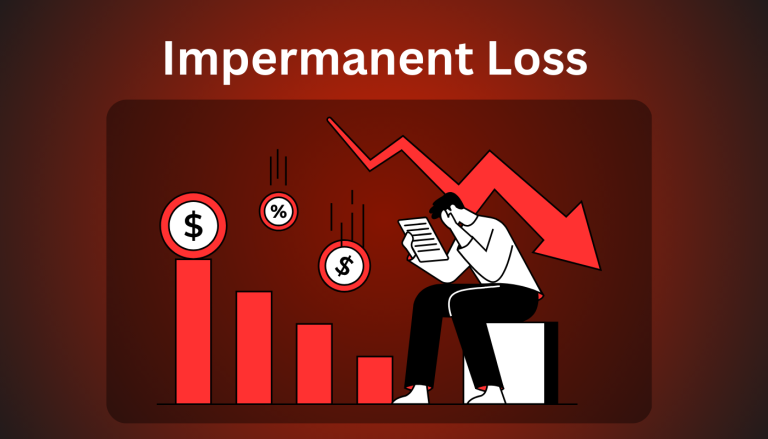Impermanent Loss in DeFi and How to Minimize ItWhat Is Impermanent Loss?
If you’re involved in Decentralized Finance (DeFi), you’ve probably heard of impermanent loss. But what does it actually mean, and why is it something every DeFi participant needs to understand? In simple terms, impermanent loss refers to the temporary loss of value that liquidity providers (LPs) might experience when the price of the tokens they’ve deposited in a liquidity pool changes in relation to one another.
While the term “impermanent” suggests that the loss could be temporary, it’s important to understand that this is not guaranteed — the loss could become permanent if you withdraw your funds when the price difference is still significant. To dive deeper into the concept of impermanent loss and how to mitigate it, check out this detailed guide on DeFi’s hidden risk: What It Is and How to Minimize It.
How Does Impermanent Loss Happen?
When you provide liquidity to a pool, you typically deposit two different assets, like ETH and USDT, in a 50/50 ratio. The goal of providing liquidity is to earn a share of the transaction fees from traders swapping between those assets. However, if the price of one of the assets increases (or decreases) significantly relative to the other, the pool will automatically adjust the amounts of each token to maintain the balance.
For example:
- You deposit $1,000 worth of ETH and $1,000 worth of USDT into a liquidity pool.
- If the price of ETH rises significantly, the pool will sell some of the ETH to maintain the 50/50 ratio, resulting in fewer ETH tokens and more USDT.
- When you withdraw your liquidity, you might find that you have more USDT but fewer ETH than you originally deposited, potentially resulting in a loss compared to simply holding the tokens.
This difference in value between your deposited tokens and their current value is known as impermanent loss.
Why Is It Called “Impermanent” Loss?
The term impermanent loss is used because, theoretically, the loss could be recovered if the prices of the assets in the liquidity pool return to their original ratio. However, if the market continues to move in one direction or if you decide to withdraw your liquidity while the imbalance still exists, the loss becomes permanent.
Essentially, impermanent loss is the risk that arises from providing liquidity to a pool where the prices of the assets are volatile. The loss happens because the algorithm of the liquidity pool adjusts the asset quantities to preserve a balance, which can lead to a decrease in the value of your position if the market fluctuates significantly.
How to Minimize Impermanent Loss
While impermanent loss is an inherent risk in liquidity provision, there are several ways to minimize its impact:
- Choose Stablecoin Pairs: Providing liquidity with pairs of stablecoins (such as USDT/USDC) can reduce the chances of significant price differences, as the price of stablecoins remains relatively constant.
- Use Volatile Assets Carefully: If you want to provide liquidity for volatile assets (like ETH/BTC), be aware of the risk of impermanent loss. Using a strategy that includes frequent monitoring or limiting exposure may help.
- Consider DeFi Platforms with Protection Mechanisms: Some DeFi platforms have built-in strategies to minimize impermanent loss or provide some form of protection. These might come with lower rewards, but they can help mitigate the risks.
- Stay Informed and Monitor Market Conditions: The more you understand market conditions and the assets you’re providing liquidity for, the better you’ll be at making informed decisions about when to enter and exit liquidity pools.
By being aware of the risks of impermanent loss and taking steps to manage it, you can participate more confidently in DeFi pools while protecting your investments.
Final Thoughts
Impermanent loss is one of the key risks associated with providing liquidity to DeFi protocols. However, with the right strategy, such as choosing stable assets, staying informed about market movements, and using DeFi platforms with risk protection mechanisms, you can minimize the impact of this risk.
For anyone involved in DeFi or considering it, understanding impermanent loss is crucial to making smarter investment choices. Learn more about impermanent loss and how to protect yourself from it.





